Tracking Ianfu through Asia
2015年11月15日 公開
2024年12月16日 更新
Tracking Ianfu through Asia
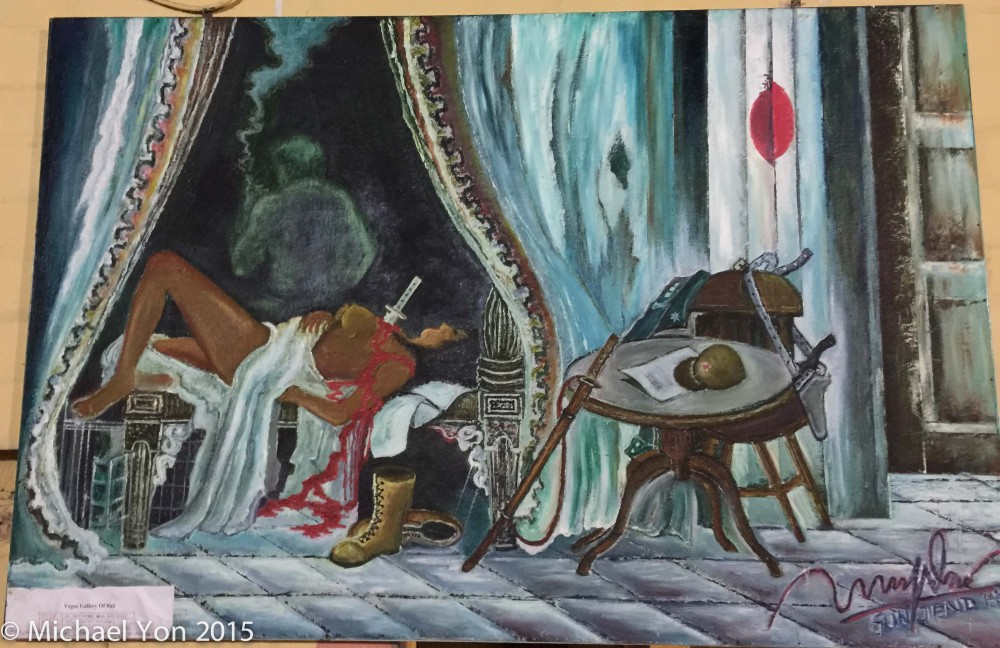
Display at Penang War Museum
Penang, Malaysia
If all the lies about Japanese were piled up and burned at once, smoke would black out the sun.
Over the past year, we have researched the “comfort women” issue in numerous countries including Japan, United States, Philippines, Thailand, Myanmar, Australia, Indonesia, and most recently, Malaysia.
In addition to these eight countries, I have spent more than ten years in Asia, traveling among 21 countries. Our sampling and research is not small, but neither is it complete.
Current research goals are simple:
1. Find the truth about World War II Japan comfort women issues.
2. Assess the pulse of current feelings about Japan.
Propagandists would have the world believe that every country in Asia hates and holds a grudge against Japan, in part for allegedly kidnapping 200,000 “sex-slaves”.
We know that Japan did not participate in any mass kidnappings. This matter is settled among serious researchers and journalists, who perpetually are in the minority on any topic.
During the course of discovery there have been many accidental finds.
One example: the famous American author Laura Hillenbrand deceived readers in her book Unbroken.
Ms. Hillenbrand stated that Japanese killed 5,000 Koreans in a “kill-all” order on Tinian Island. She cited two sources: we checked them. One source turned out to be nothing more than hearsay based on a statue erected by Koreans.
A Hillenbrand citation: “Murder on Tinian: Eric Lash, Historic Island of Tinian, Environmental Services, October 2008, vol. 1, 2nd edition.”
The ‘source’ document from Hillenbrand’s citation is fraudulent. This can be seen with only a few minutes examination. No forensics required. For example, in just a short space the document spells Mr. Lash’s first name three different ways: Eric, Erik, Erick.
After inquiring at Environmental Services, a response came from Terri Russ, Senior Manager-Archaeology. According to Ms. Russ, “ESI did not do any work on this project (Eric Lash was not working for ESI at the time).”
.jpg)
Tinian, 1945 -- a massive US military base, and no hint of a Korean massacre
We checked US military records, and news reports from the time. After the US invasion, the New York Times stated that 2,400 Koreans were still living on Tinian.
Tinian was a critical launching point for the American attack on Japan. The small island was flooded with US troops who built six major runways, making Tinian the busiest air destination of the war. In 1945, Tinian was the largest single airport in the world.
There is no mention, from anyone, about a massacre. Were our Marines, Army, and Navy negligent in missing evidence of 5,000 murdered Koreans? Given the US military’s proclivity for methodical documentation, this seems unlikely.
Hillenbrand wrote, “In accordance with the kill-all order, the Japanese massacred all 5,000 Korean captives on Tinian…”
Captives? Koreans were Japanese citizens. Hundreds of thousands of Koreans served in the Japanese military. Some of them were officers.
Yet twice Hillenbrand makes this claim, “…the Japanese employed a kill-all policy. They murdered all five thousand Koreans.”
We looked at first hand accounts from US linguists responsible for encouraging Japanese and Korean civilians to surrender. They said nothing about Japanese killing Koreans. Nothing.
We used Tinian to launch firebomb attacks on Japan. Burning down Japanese cities by the dozen. Why would we cover up the murder of 5,000 innocent people?

'Atomic bomb' at Penang War Museum
Importantly, the United States was preparing to launch two atomic attacks from Tinian. We had a vested interest in claiming that Japanese committed 5,000 war crimes on the very island from which we destroyed Hiroshima and Nagasaki.
Tinian is only 101 km² (39 mi²). Hillenbrand’s hometown of Washington, D.C. is 177 km². Does she propose that in the modern years of 1944-1945 that an Army could slaughter 5,000 people without a trace, and that the thousands left behind might not notice?

Tinian, circa June, 1945
That Hillenbrand alleges such a massive war crime and did not bother to travel there or to cite US records, is professional malfeasance. It was later revealed that she never physically met the subject of her book, Mr. Louis Zamperini, until after the book was published, though she claims that she researched the book for seven years.
About ten years ago, I interviewed Hillenbrand because she was lending her name to help Iraqi children in the war that I was covering at the time. I respect Laura for her efforts to help children, and I keep her work in mind while writing these hard words. But as a historian – or as a non-fiction writer – Hillenbrand is economy class.
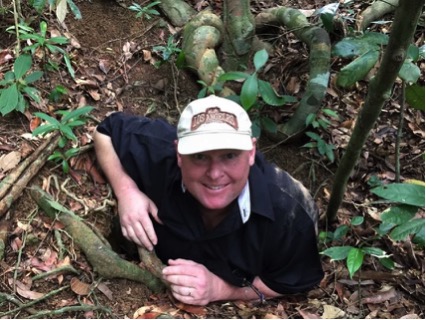
Japanese tunnel system near Ranong, Thailand. At Ranong, elderly people who worked with Japanese during World War II expressed fondness for Japanese.
In September of 2015, I reached out to Hillenbrand’s publisher, asking for clarification about the 5,000 Koreans murdered on Tinian. The publisher declined to comment, saying that since the book was released so long ago that Hillenbrand was no longer available for interviews.
I asked to interview the editor. Same response. The publisher still advertises for interviews.
By claiming that Japanese committed a massacre on Tinian, Hillenbrand committed a crime against literature. She massacred truth. She literally committed fraud.
When I bought Hillenbrand’s book, it had been on the New York Times bestseller list for three years, and a movie directed by Angelina Jolie was in the pipeline. I want my money back.
The propaganda is so complete that even many Japanese believe it.
The current research trip, from Jakarta to Kanchanaburi to Bangkok to Ranong to Penang, has been one of great discovery.
In Bangkok we found literature describing an ianfu station (ianjo) at the luxuriousTrocadero Hotel, in downtown Bangkok.
I taxied from the National Archives to the Trocadero Hotel to find it still standing, dilapidated, stained and crumbling, with the typical cobweb power lines obscuring the façade.
The bottom floor by the street is converted to small shops, most selling jewelry. The façade from west to east is 100 meters long, and just near the eastern corner is NASA Silver Company, LTD.
On the corner beside NASA is “Jasmine Massage,” open 0900 to midnight.
Through the double doors, up the stairs to the second floor, is the action, complete with private rooms, showers, and signs that say in Thai and English, NO MAKING LOVE HERE !!
The reality is that the ianjo from 70 years ago at the Trocadero still echoes, but as an unregulated purveyor of pleasure. Despite the sign, it is a brothel today.
The absurdity of the idea that Chinese and Korean prostitutes needed to be shipped to Thailand is beyond reason. Each place that we researched returned similar results. For instance, Angeles City, Philippines: I have never seen more prostitutes in one location anywhere in the world, and that says a lot.
So the eighth country so far in this research is Malaysia.
Hours before the 1941 attack on Pearl Harbor, Japanese attacked Kota Bharu, Malaysia. Their enemies were the United Kingdom, British India, Australia, and local resistance. Kota Bharu was the first major battle of the Pacific war.
The British Empire had reached its zenith. The most powerful empire the world ever witnessed. Japanese had the audacity to attack the British Empire, the Dutch, the US, and more, all simultaneously.
Soon the Japanese army marched through the streets of Penang.
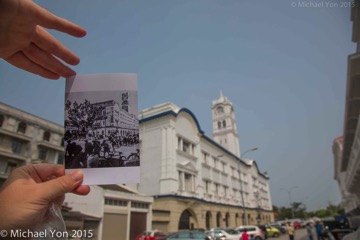
A co-researcher in Penang holds an old photograph of Japanese Soldiers
Singapore would follow. With the distance in history it becomes easy to gloss over the British loss of Singapore to the Japanese.
To put this in American terms, losing Singapore would be like the US losing Hawaii, with nearly all of our forces killed or captured and shipped away. The psychological damage was tremendous.
The stunning Japanese victories were short-lived, but they set conditions for independence across Asia.
Seventy years later, our team stepped onto Penang to find the truth about accusations that the Japanese kidnapped 200,000 to 400,000 sex-slaves, taking them to places like Penang.
The anti-Japanese narrative from the Koreans and Chinese holds that virtuous local girls were going about their lives when the evil Japanese barreled in, kidnapping them to foreign lands to work in “rape stations.”
This is not a far leap of imagination for Koreans and Chinese because still in 2015, Koreans and Chinese continue to engage in wholesale human sex-trafficking. Just this year, a large human-smuggling and prostitution ring was busted in Canada. Predictably, the arrested suspects were Koreans and Chinese. Sex-trafficking is traditional business in Korea and China.
In his book, Penang at War, author Andrew Barber describes a situation with Chinese-controlled comfort women:
“In the nineteenth century, the British generally turned a blind eye to a business controlled and dominated by Chinese, though towards the end of the century they had sought to police it with greater vigor – largely to ensure that girls were over sixteen and were working of their own volition. The authorities established ‘Po Leung Kuk’ houses in Singapore and Penang, where girls who had been forcibly procured could find refuge.”
During 2015 in Penang, we discovered that little has changed from Mr. Barber’s description of 1914, well before the Japanese invasion:
“In 1914, government officials visited Penang’s brothels to ensure that the girls were not there under duress. The establishments were small and parochial, often also used for gaming and opium smoking. The government survey revealed that Penang had 159 brothels employing 690 Chinese, 129 Japanese, 36 Tamil and 56 Malay girls – a total of 911 ‘registered’ prostitutes amounting to just under four girls per establishment and representing in total about five percent of the single adult female population of George Town.30 Japanese girls were noted for their skills and generally had a reputation for being ‘high end.’ The absence of European prostitutes in Penang is difficult to explain, though Singapore’s 34 European girls never amounted to more than an exotic niche in the wider market.”
When the Japanese practiced standards during World War II that were still accepted by Americans, the Japanese were considered savage.
In 2015, our glimpse of locals and the underworld terrain revealed that little has changed since 1914, other than that prostitution is today illegal in Malaysia.
Prostitution remains vibrant in Penang. Much is on the surface. The rest is hidden under transparent paint, with taxi drivers frequently soliciting, “You want Russian girls? Chinese? Vietnamese very good. Russian most expensive.” Every day brought similar offers.
The prostitutes are available in the same way that one can buy food. There is street food, bar food takeaway, “restaurant,” and delivery.
Some of this is flagrant. Women or lady boys make close approaches or do the normal street corner shuffle.
Vietnamese women arrive on tourist visas, stay until the visa expires, and rotate out. They approach foreigners in bars.
The Russian women and some of the others work in pods, moving around night to night to different hotels. So a group of four will stay in hotel X one night, and Y the next, and Z the next night.
Business is solicited through a network of taxi drivers, bartenders, hoteliers, and others who come into contact with the normal client base. In some cases, the women stay in the same hotel but switch rooms and women each night. The price range goes from about $10 for local-on-local service, to $500 for top-end prostitutes.
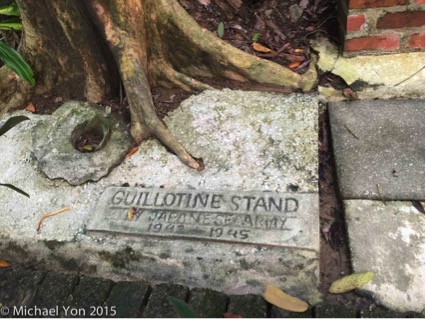
Display at Penang War Museum: Japanese were not known to use Guillotines
Separate but overlapping on Penang is the huge population of factory workers brought in from villages around Asia. Many are poor, young girls who are housed in large apartment blocks. Stories tantamount to slavery are widely covered by the international press.
Many girls are recruited with promises of wages of up to $300 per month. Often their passports are confiscated, and they end up with a take home pay of perhaps $100 per month, and bills which they can never repay. Some of these girls moonlight as prostitutes.
Some work as domestic help, often for agencies. So during daytime a young woman might be the maid, and the cook, and the babysitter, and at night she performs sex-work.
Prostitution is so thick in Penang that it does not take a year to crack into the network. It takes days. Hours. This was like going to Hawaii searching for pineapples.
As a matter of law enforcement, this charade allows business to prosper while maintaining a veneer of respectability for the Islamic country.
Meanwhile, many components for our computers are made by delicate, indentured hands, that often double as prostitutes. In Penang, modern day sex-work and even sex-slavery and indentured servitude are omnipresent.
I asked many people of different backgrounds what they think of Japanese, Koreans, Chinese, and more. Some were of Indian background, others Chinese, Malaysian, or Bangladeshi. The answers were predictable.
On the NO-like list: Koreans, Chinese from PRC (not Taiwan, etc.), Indians, Arabs.
Favorites: Japanese, Europeans, Americans. I have asked many people in many countries: answers seldom vary.
The idea that the Japanese are hated throughout Asia is a farce. Japan easily is one of the most respected countries in Asia.
We visited the Penang War Museum. “Museum” is a generous term. The place is a veritable shrine of anti-Japanese sentiment.
It doubles as a haunted house, and as a paintball course. Bukit hantu – “Ghost Hill” – is said to be one of the ten most-haunted sites in Asia.
The haunted house includes big, scary creatures up in a tree, spooky stories, and more.

Kamikaze 'suicide vest.'
There is a mockup of an atomic bomb that does not resemble Little Boy or Fat Man. There is the giant hand grenade, and much more, including the suicide vest for kamikaze pilots complete with circuit boards from a modern DVD player.
The sign above the “suicide vest” states that kamikaze destroyed the Prince of Wales and Repulse on 10 December 1941. The truth is that the British ships were destroyed with normal airstrikes, not by kamikaze.
The kamikaze “Special Attack Force” did not crank up until the war was nearly over in 1944.

The museum makes equally spurious claims about Japanese taking sex-slaves. When Japanese stand up and say this is all nonsense, they are labeled rightwing revisionists, nationalists warmongers, or just as kooks.
Americans who have travelled to Vietnam and toured war museums -- as have I -- are often shocked, saddened, or angry at the portrayal of US troops and the United States. Yet when Japanese express the same feelings about lies towards Japan -- obvious lies – they are called revisionists.
The curator, Mr. Johari Shafie, proudly told us that he had been invited to Beijing for a three day conference in September. In Beijing he was invited to join the “International WW II Museum Association.” Activities on the schedule included visiting the “Museum of the War of Chinese People’s Resistance Against Japanese Aggression, Marco Polo Bridge.”

Guests of the Chinese information Machine in Beijing
Mr. Shafie spoke hard words against Japanese, saying they raped the local women on Penang and took them as sex-slaves.
Mr. Shafie is the man who displays a kamikaze suicide vest using a DVD circuit, on an island that is tilting under the weight of prostitutes, and real sex slaves who are on Penang in 2015.
Malaysia in general and Penang specifically are famous for human trafficking that is ongoing, yet he deflects blame to Japan. I saw it with my own eyes.
China is using this information war as a precursor to a hot war with Japan. The time to act is now. Japan must actively invest in a truth campaign or risk drowning in Chinese hatred.
Voiceの詳細情報
アクセスランキング(週間)
更新:12月29日 00:05
- 「チクショー。やめろ」 オウム真理教・麻原死刑囚最後の日
- “日本の若者は右傾化”したのか? リベラル台頭の裏にある不都合な現実
- 「皇帝政治」が災いの始まりだった?わずか15年で秦を滅亡させた始皇帝の誤算
- アメリカ軍は弱体化している...世界トップに躍り出た「中国海軍の軍事力」
- なぜ弾圧? 知っておきたい中国政府と「ウイグル族」の歴史
- 40度の夏は「人災である」 世界で最も深刻な日本の猛暑の原因
- “高学歴な人”ほど左派政党を支持する「先進国の現実」
- 「台湾有事は日本有事」の意味とは? 地政学で読み解く危機の現実
- 習近平の「暗殺未遂数」は歴代トップクラス
- 七三一部隊はいかにして生まれたか? 石井四郎がソ連の細菌兵器から得た口実


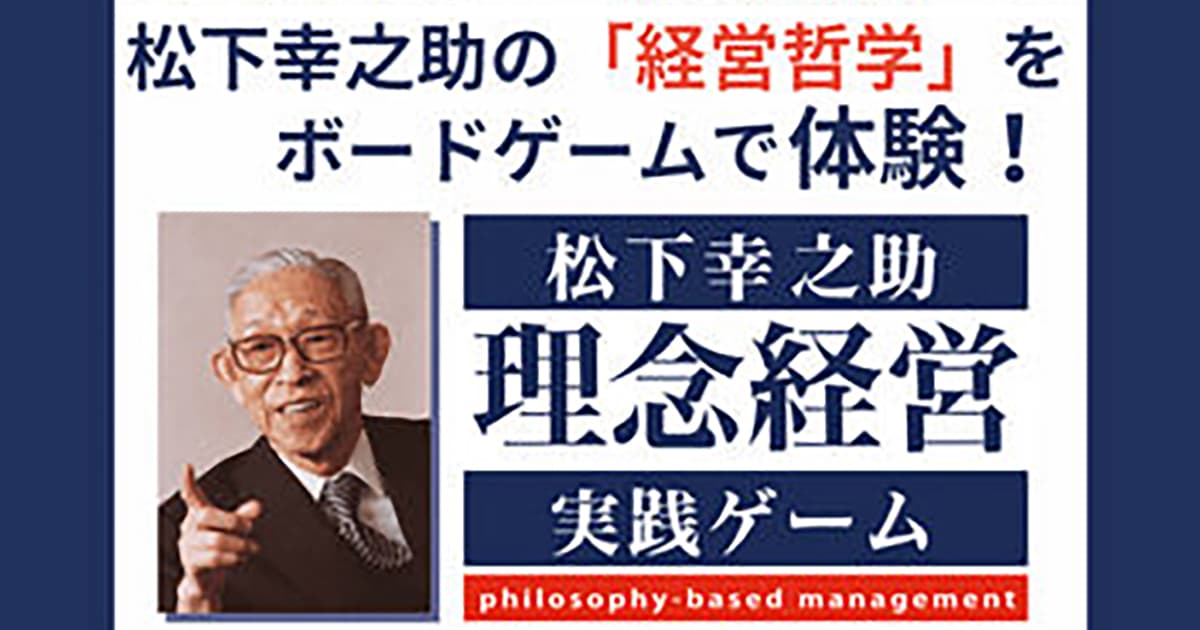
.jpg)
